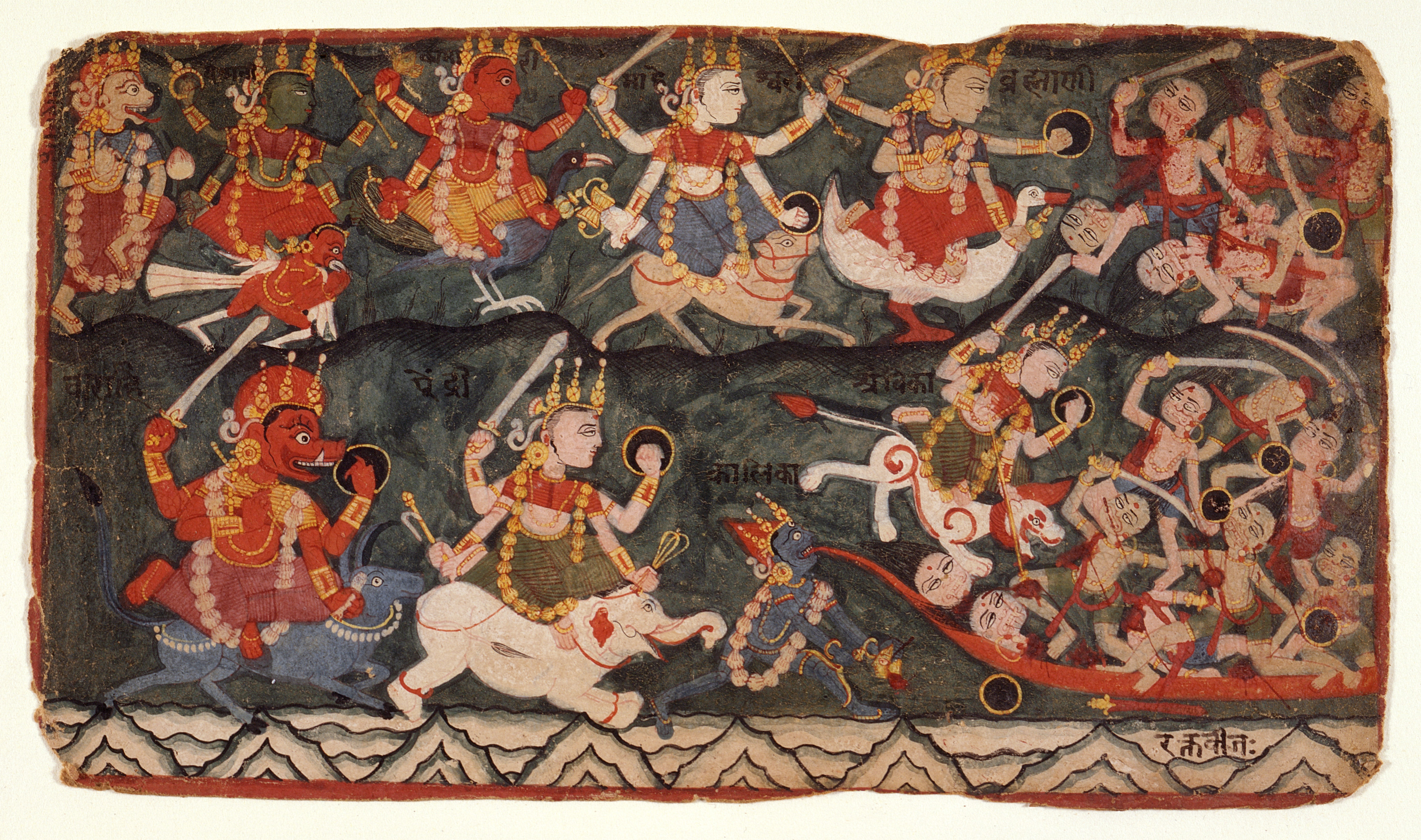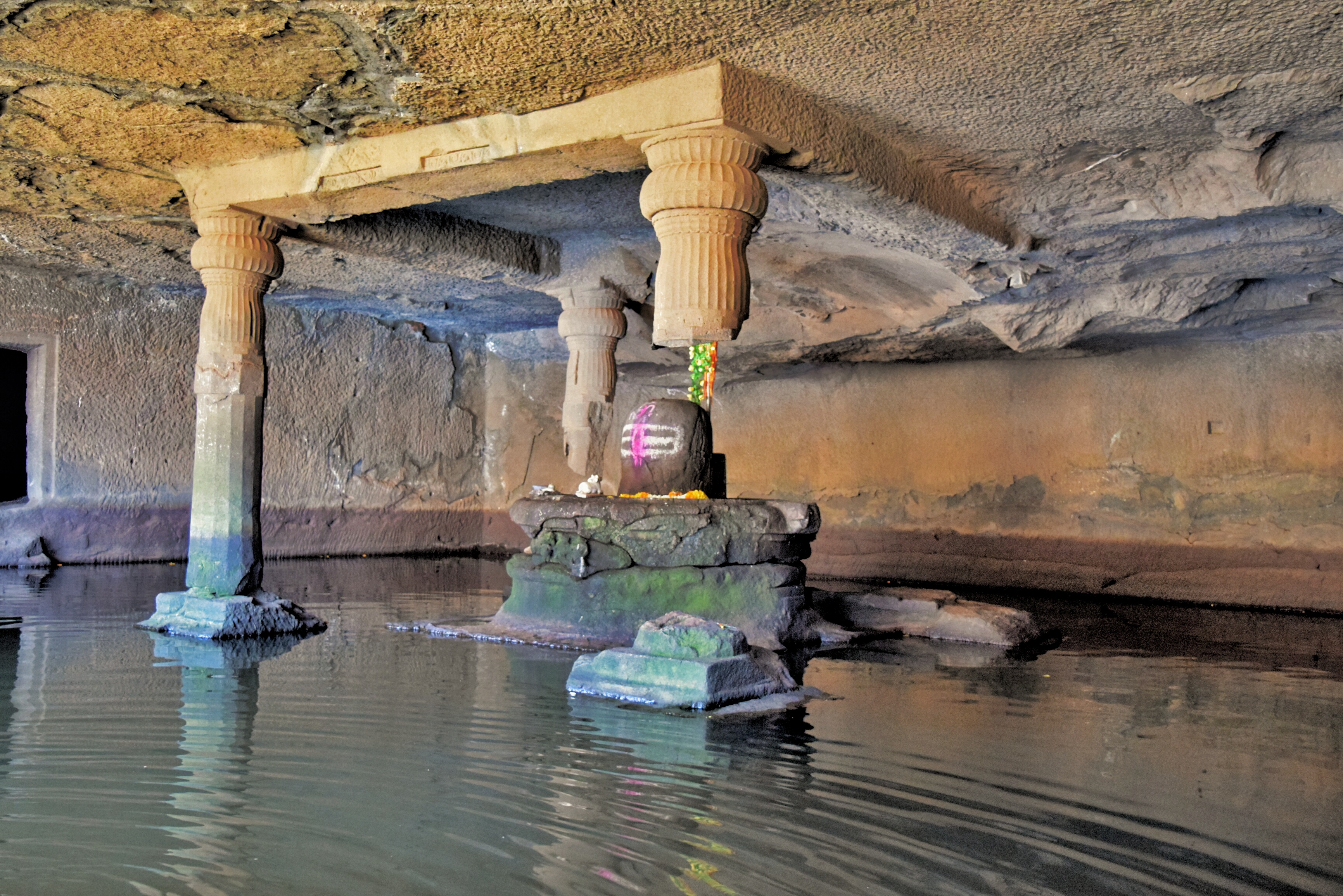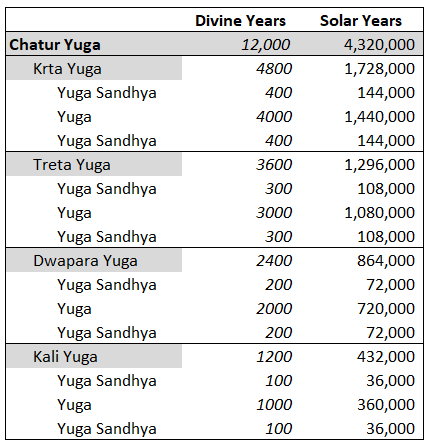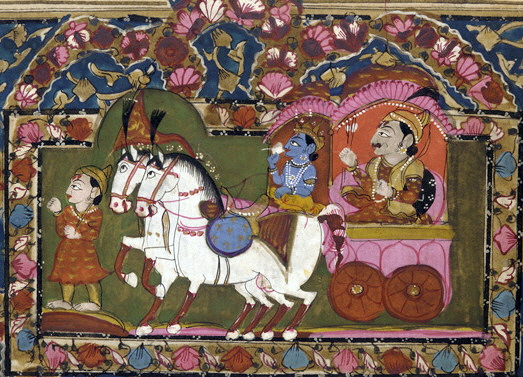|
Itihasa
Itihasa () refers to the collection of written descriptions of important events in Hinduism. It includes the Mahabharata, the Puranas and the Ramayana. The Mahabharata includes the story of the Kurukshetra War and preserves the traditions of the Lunar dynasty in the form of embedded tales. The Puranas narrate universal history – the books discuss in depth the topics of cosmogony, myth, legend and history. The Ramayana contains the story of Rama and is incidentally related to the legends of the Solar dynasty. A story is considered to be ''itihasa'' only when the author of the story has himself witnessed or is part of the story. Vyasa, who wrote the ''Mahabharata'', is himself a character in the story. Similarly, Valmiki, who wrote the ''Ramayana'', was also a character in the story. Many classical Indian poets derive the plots of their poetry and drama from the Itihasa. The tradition of itihāsa is generally understood to be developed by the bardic tradition of Sūtas and ... [...More Info...] [...Related Items...] OR: [Wikipedia] [Google] [Baidu] |
Puranas
Purana (; sa, , '; literally meaning "ancient, old"Merriam-Webster's Encyclopedia of Literature (1995 Edition), Article on Puranas, , page 915) is a vast genre of Indian literature about a wide range of topics, particularly about legends and other traditional lore. The Puranas are known for the intricate layers of symbolism depicted within their stories. Composed originally in Sanskrit and in other Indian languages,John Cort (1993), Purana Perennis: Reciprocity and Transformation in Hindu and Jaina Texts (Editor: Wendy Doniger), State University of New York Press, , pages 185-204 several of these texts are named after major Hindu gods such as Vishnu, Shiva, Brahma, and Adi Shakti. The Puranic genre of literature is found in both Hinduism and Jainism. The Puranic literature is encyclopedic, and it includes diverse topics such as cosmogony, cosmology, genealogies of gods, goddesses, kings, heroes, sages, and demigods, folk tales, pilgrimages, temples, medicine, astronomy ... [...More Info...] [...Related Items...] OR: [Wikipedia] [Google] [Baidu] |
Deva (Hinduism)
''Deva'' (; Sanskrit: , ) means "shiny", "exalted", "heavenly being", "divine being", "anything of excellence", and is also one of the Sanskrit terms used to indicate a deity in Hinduism.Monier Monier-Williams, A Sanskrit-English Dictionary” Etymologically and Philologically Arranged to cognate Indo-European Languages, Motilal Banarsidass, page 492 ''Deva'' is a masculine term; the feminine equivalent is '' Devi''. In the earliest Vedic literature, all supernatural beings are called ''Devas''George Williams (2008), A Handbook of Hindu Mythology, Oxford University Press, , pages 90, 112 and '' Asuras''. The concepts and legends evolved in ancient Indian literature, and by the late Vedic period, benevolent supernatural beings are referred to as ''Deva-Asuras''. In post-Vedic Hindu texts, such as the Puranas and the Itihasas of Hinduism, the ''Devas'' represent the good, and the ''Asuras'' the bad. In some medieval works of Indian literature, ''Devas'' are also referred ... [...More Info...] [...Related Items...] OR: [Wikipedia] [Google] [Baidu] |
Satya Yuga
''Satya Yuga'' ( ''Krita Yuga''), in Hinduism, is the first and best of the four '' yugas'' (world ages) in a ''Yuga Cycle'', preceded by ''Kali Yuga'' of the previous cycle and followed by ''Treta Yuga''. ''Satya Yuga'' lasts for 1,728,000 years (4,800 divine years). ''Satya Yuga'' is known as the age of truth, when humanity is governed by gods, and every manifestation or work is close to the purest ideal and humanity will allow intrinsic goodness to rule supreme. It is sometimes referred to as the "Golden Age". The god ''Dharma'' (depicted in the form of a bull), which symbolizes morality, stood on all four legs during this period. The legs of ''Dharma'' reduce by one in each ''yuga'' that follows. Etymology '' Yuga'' ( sa, युग), in this context, means "an age of the world", where its archaic spelling is ''yug'', with other forms of ''yugam'', , and ''yuge'', derived from ''yuj'' ( sa, युज्, , to join or yoke), believed derived from ' (Proto-Indo-European: 'to ... [...More Info...] [...Related Items...] OR: [Wikipedia] [Google] [Baidu] |
Kali Yuga
''Kali Yuga'', in Hinduism, is the fourth and worst of the four '' yugas'' (world ages) in a '' Yuga Cycle'', preceded by ''Dvapara Yuga'' and followed by the next cycle's '' Krita (Satya) Yuga''. It is believed to be the present age, which is full of conflict and sin. The "Kali" of ''Kali Yuga'' means "strife", "discord", "quarrel", or "contention" and ''Kali Yuga'' is associated with the demon Kali (not to be confused with the goddess Kālī). According to Puranic sources, Krishna's death marked the end of ''Dvapara Yuga'' and the start of ''Kali Yuga'', which is dated to 17/18 February 3102 BCE. Lasting for 432,000 years (1,200 divine years), ''Kali Yuga'' began years ago and has years left as of CE. ''Kali Yuga'' will end in the year 428,899 CE. Etymology '' Yuga'' ( sa, युग), in this context, means "an age of the world", where its archaic spelling is ''yug'', with other forms of ''yugam'', , and ''yuge'', derived from ''yuj'' ( sa, युज� ... [...More Info...] [...Related Items...] OR: [Wikipedia] [Google] [Baidu] |
Treta Yuga
''Treta Yuga'', in Hinduism, is the second and second best of the four '' yugas'' (world ages) in a '' Yuga Cycle'', preceded by '' Krita (Satya) Yuga'' and followed by ''Dvapara Yuga''. ''Treta Yuga'' lasts for 1,296,000 years (3,600 divine years). ''Treta'' means 'a collection of three things' in Sanskrit, and is so called because during the ''Treta Yuga'', there were three Avatars of Vishnu that were seen, the fifth, sixth and seventh incarnations as Vamana, Parashurama and Rama, respectively. The bull of Dharma symbolizes that morality stood on three legs during this period. It had all four legs in the ''Satya Yuga'' and two in the succeeding ''Dvapara Yuga''. Currently, in the immoral age of '' Kali'', it stands on one leg. Etymology '' Yuga'' ( sa, युग), in this context, means "an age of the world", where its archaic spelling is ''yug'', with other forms of ''yugam'', , and ''yuge'', derived from ''yuj'' ( sa, युज्, , to join or yoke), believed derived from ... [...More Info...] [...Related Items...] OR: [Wikipedia] [Google] [Baidu] |
Hindu Texts
Hindu texts are manuscripts and voluminous historical literature which are related to any of the diverse traditions within Hinduism. A few of these texts are shared across these traditions and they are broadly considered Hindu scriptures. These include the Puranas, Itihasa and Vedas. Scholars hesitate in defining the term "Hindu scriptures" given the diverse nature of Hinduism,Dominic Goodall (1996), Hindu Scriptures, University of California Press, , page ix-xliii but many list the Bhagavad Gita and the Agamas as Hindu scriptures,Klaus Klostermaier (2007), A Survey of Hinduism: Third Edition, State University of New York Press, , pages 46–52, 76–77 and Dominic Goodall includes Bhagavata Purana and Yajnavalkya Smriti in the list of Hindu scriptures as well. History There are two historic classifications of Hindu texts: '' Śruti'' – that which is heard, and '' Smriti'' – that which is remembered. The ''Shruti'' refers to the body of most authoritative, ancient relig ... [...More Info...] [...Related Items...] OR: [Wikipedia] [Google] [Baidu] |
Yuga Cycle
A ''Yuga'' Cycle ( ''chatur yuga'', ''maha yuga'', etc.) is a cyclic age (epoch) in Hindu cosmology. Each cycle lasts for 4,320,000 years (12,000 divine years) and repeats four '' yugas'' (world ages): '' Krita (Satya) Yuga'', '' Treta Yuga'', ''Dvapara Yuga'', and ''Kali Yuga''. As a ''Yuga'' Cycle progresses through the four ''yugas'', each '' yuga's'' length and humanity's general moral and physical state within each ''yuga'' decrease by one-fourth. ''Kali Yuga'', which lasts for 432,000 years, is believed to have started in 3102 BCE. Near the end of ''Kali Yuga'', when virtues are at their worst, a cataclysm and a re-establishment of ''dharma'' occur to usher in the next cycle's ''Satya Yuga'', prophesied to occur by Kalki. There are 71 ''Yuga'' Cycles in a '' manvantara'' (age of Manu) and 1,000 ''Yuga'' Cycles in a ''kalpa'' (day of Brahma). Lexicology A ''Yuga'' Cycle has several names. Age or '' Yuga'' ( sa, युग, , an age of the gods): : "Age" and "''Yuga''", so ... [...More Info...] [...Related Items...] OR: [Wikipedia] [Google] [Baidu] |
Dvapara Yuga
''Dvapara Yuga'' ( Dwapara Yuga), in Hinduism, is the third and third best of the four '' yugas'' (world ages) in a '' Yuga Cycle'', preceded by '' Treta Yuga'' and followed by '' Kali Yuga''. ''Dvapara Yuga'' lasts for 864,000 years (2,400 divine years). According to the Puranas, this ''yuga'' ended when Krishna returned to his eternal abode of Vaikuntha. There are only two pillars of religion during the ''Dvapara Yuga'': compassion and truthfulness. Vishnu assumes the colour yellow and the Vedas are categorized into four parts: '' Rig Veda'', '' Sama Veda'', '' Yajur Veda'' and '' Atharva Veda''. During these times, the Brahmins are knowledgeable of two or three of these but rarely have studied all the four Vedas thoroughly. Accordingly, because of this categorization, different actions and activities come into existence. Etymology '' Yuga'' ( sa, युग), in this context, means "an age of the world", where its archaic spelling is ''yug'', with other forms of ''yugam'', , ... [...More Info...] [...Related Items...] OR: [Wikipedia] [Google] [Baidu] |
Ramayana
The ''Rāmāyana'' (; sa, रामायणम्, ) is a Sanskrit epic composed over a period of nearly a millennium, with scholars' estimates for the earliest stage of the text ranging from the 8th to 4th centuries BCE, and later stages extending up to the 3rd century CE. ''Ramayana'' is one of the two important epics of Hinduism, the other being the ''Mahābhārata''. The epic, traditionally ascribed to the Maharishi Valmiki, narrates the life of Sita, the Princess of Janakpur, and Rama, a legendary prince of Ayodhya city in the kingdom of Kosala. The epic follows his fourteen-year exile to the forest urged by his father King Dasharatha, on the request of Rama's stepmother Kaikeyi; his travels across forests in the Indian subcontinent with his wife Sita and brother Lakshmana, the kidnapping of Sita by Ravana – the king of Lanka, that resulted in war; and Rama's eventual return to Ayodhya to be crowned king amidst jubilation and celebration. The ''Ramayana'' is ... [...More Info...] [...Related Items...] OR: [Wikipedia] [Google] [Baidu] |
Mahabharata
The ''Mahābhārata'' ( ; sa, महाभारतम्, ', ) is one of the two major Sanskrit epics of ancient India in Hinduism, the other being the '' Rāmāyaṇa''. It narrates the struggle between two groups of cousins in the Kurukshetra War and the fates of the Kaurava and the Pāṇḍava princes and their successors. It also contains philosophical and devotional material, such as a discussion of the four "goals of life" or ''puruṣārtha'' (12.161). Among the principal works and stories in the ''Mahābhārata'' are the ''Bhagavad Gita'', the story of Damayanti, the story of Shakuntala, the story of Pururava and Urvashi, the story of Savitri and Satyavan, the story of Kacha and Devayani, the story of Rishyasringa and an abbreviated version of the '' Rāmāyaṇa'', often considered as works in their own right. Traditionally, the authorship of the ''Mahābhārata'' is attributed to Vyāsa. There have been many attempts to unravel its historical growth ... [...More Info...] [...Related Items...] OR: [Wikipedia] [Google] [Baidu] |
Manvantara
A ''manvantara'', in Hindu cosmology, is a cyclic period of time identifying the duration, reign, or age of a Manu, the progenitor of mankind. In each ''manvantara'', seven Rishis, certain deities, an Indra, a Manu, and kings (sons of Manu) are created and perish. Each ''manvantara'' is distinguished by the Manu who rules/reigns over it, of which we are currently in the seventh ''manvantara'' of fourteen, which is ruled by Vaivasvata Manu.Account of the several Manus and Manwantaras , translated by , 1840, Book III: Chapter ... [...More Info...] [...Related Items...] OR: [Wikipedia] [Google] [Baidu] |
Kalpa (aeon)
A ''kalpa'' is a long period of time (aeon) in Hindu and Buddhist cosmology, generally between the creation and recreation of a world or universe. Etymology ''Kalpa'' ( sa, कल्प, , a formation or creation) in this context, means "a long period of time (aeon) related to the lifetime of the universe (creation)." It is derived from ''कॢप्'' (kḷp) + -अ (-a, nominalizing suffix) ( sa, कॢप्, kḷp, to create, prepare, form, produce, compose, invent). Hinduism In Hinduism, a ''kalpa'' is equal to 4.32 billion years, a "day of Brahma" (12-hour day proper) or one thousand '' mahayugas'', measuring the duration of the world. Each ''kalpa'' is divided into 14 '' manvantara'' periods, each lasting 71 '' Yuga Cycles'' (306,720,000 years). Preceding the first and following each ''manvantara'' period is a juncture (''sandhya'') equal to the length of a '' Satya Yuga'' (1,728,000 years). A ''kalpa'' is followed by a '' pralaya'' (dissolution) of ... [...More Info...] [...Related Items...] OR: [Wikipedia] [Google] [Baidu] |

.jpg)








